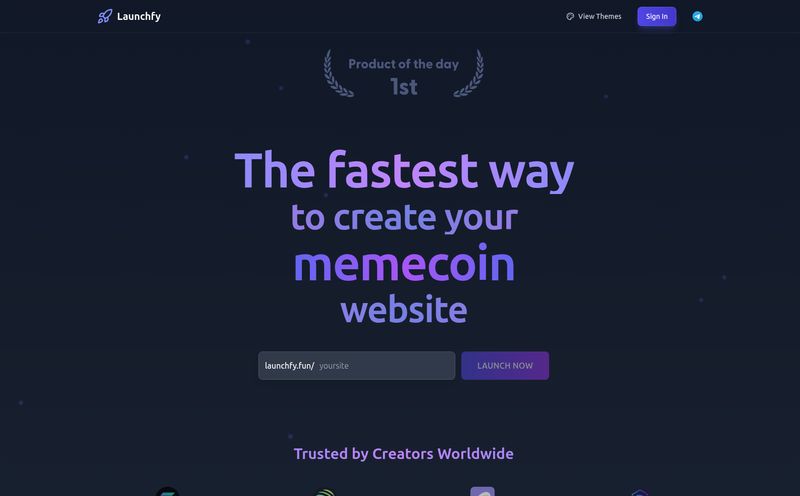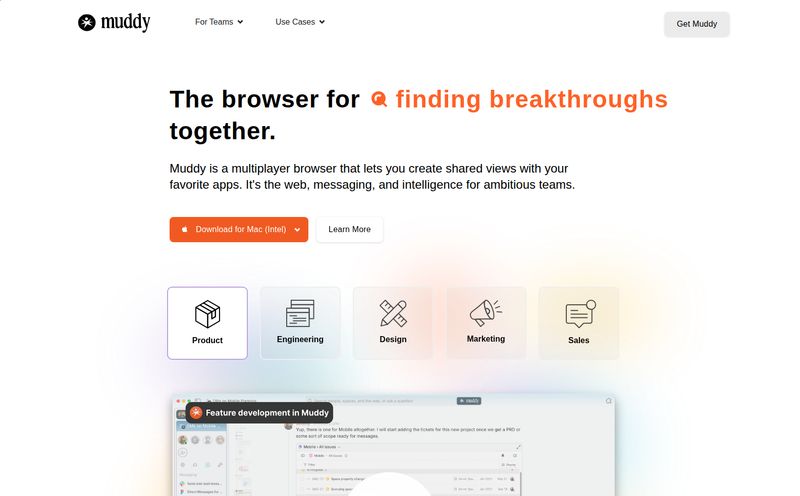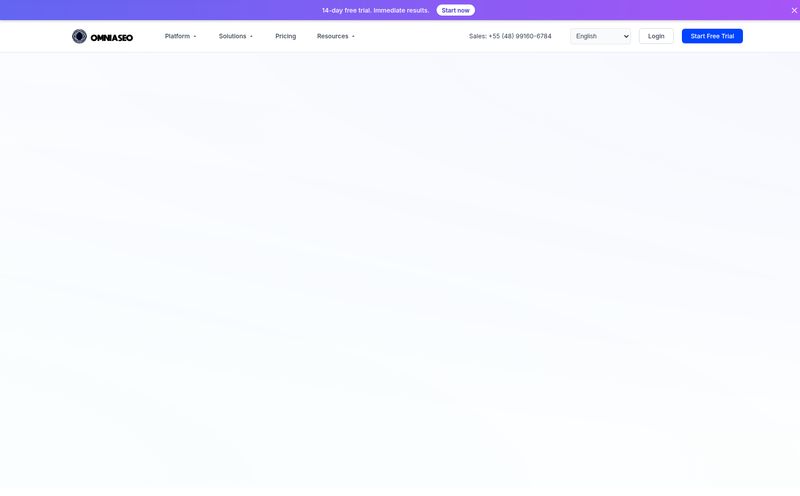If you're running a business in 2024, your customer communication isn't just happening over email anymore. It’s a chaotic symphony of WhatsApp notifications, Instagram DMs, Facebook Messenger pings, and maybe even a Telegram message for good measure. A few years ago, I was managing a small e-commerce brand, and trying to keep track of it all felt like playing digital whack-a-mole. A potential sale would pop up in Instagram DMs, a support question on WhatsApp... and I'd be scrambling between apps, terrified I’d miss something important. It was a mess.
This is the exact headache that platforms like Callbell claim to solve. They promise a single, unified inbox for all your messaging channels. A mission control center for your customer conversations. But as we know in the SEO and digital marketing world, promises are easy. Execution is everything. So, I decided to take a proper look at Callbell, kick the tires, and see if it's genuinely the solution for businesses drowning in DMs.
So, What Exactly is Callbell?
At its heart, Callbell is a multi-agent customer support platform built for the messaging era. Think of it as a shared inbox, but specifically designed for the apps your customers actually use: WhatsApp, Instagram Direct, Facebook Messenger, and Telegram. Instead of your whole team sharing one phone or logging in and out of social accounts, everyone gets access through a single, clean dashboard.
This centralizes everything. No more “Did anyone reply to that person on Facebook?” or losing a lead because their message got buried in a personal account. It’s about bringing order to the beautiful chaos of modern customer engagement. And frankly, it’s a problem that needed solving yesterday.
">
The Features That Actually Matter
A platform can have a million features, but only a few truly move the needle. Here’s my breakdown of what makes Callbell interesting.
The Unified Inbox: Your Sanity Saver
This is the main event. The ability to see and reply to chats from WhatsApp, Instagram, and more, all in one place, is the core value. What I appreciate here is the focus on team collaboration. You can assign chats to specific agents, leave internal notes on a conversation (a lifesaver for handoffs), and see who’s working on what. It turns a support queue from a free-for-all into an organized workflow. This is a far cry from passing a single 'support phone' around the office, something I've seen happen at more than one startup. A truly shudder-worthy memory.
Putting Support on Autopilot with Chatbots
Okay, let’s talk automation. Callbell offers an Advanced Bot Builder. This isn't just about a simple “We’ll be back on Monday” auto-reply. We're talking about building conversational flows to handle common questions, qualify leads, or route customers to the right department, 24/7. Think of all the time you spend answering “What are your hours?” or “Where is my order?”. A well-built bot can handle that, freeing up your human agents for the complex stuff. It's an add-on module, which we’ll get to in the pricing section, but for a team looking to scale support without scaling headcount, its a powerful tool.
Beyond One-to-One: Broadcasts and Campaigns
This one's for the marketers. Callbell has a broadcast module specifically for WhatsApp campaigns. This lets you send out marketing messages, promotions, or updates to a list of contacts. Now, you have to be careful here and follow WhatsApp’s rules (no spamming!), but for things like new product announcements or special offers for opted-in customers, it's incredibly direct and effective. The open rates on WhatsApp can blow email marketing out of the water, if done right.
Let's Talk Money: Breaking Down Callbell's Pricing
Alright, the all-important question: what does it cost? I've always felt that pricing tells you a lot about a company's philosophy. Callbell's approach is modular, which I personally like. You start with a base plan and then add what you need. It prevents you from paying for enterprise-level features you’ll never touch.
Here’s the gist of it:
- Multiagent Chat Plan: This starts at $15 per user/month. It gets you the core shared inbox for your team, which is a very reasonable entry point.
- Multiagent Chat Plus Plan: This is $20 per user/month and adds things like advanced stats, API access for integrations, and dedicated support. For any business serious about data and connecting their tools, this is likely the better starting point.
- Enterprise Plan: This is a custom plan for larger teams (50+ agents) and includes premium features like ChatGPT integration and SSO. You'll have to talk to them for a quote.
Now, here's where the modular part comes in. The core plans are just the beginning. You can add specific capabilities as needed:
">
| Module | Cost | What It Does |
|---|---|---|
| Advanced Bot Builder | $66 / month | Automate conversations across all channels. |
| Broadcast / Campaign Module | $0.02 / contact reached | Send WhatsApp marketing campaigns. |
| Extra Channel Accounts | $22 / month | Add more FB, Instagram, or WhatsApp accounts. |
My take? This is a double-edged sword. It’s great for flexibility. A small team that just needs a shared inbox can get started for cheap. But if you want the full suite of automation and marketing tools, the costs can add up. You have to do the math for your specific use case. The per-user fee plus the bot module could put you around $100/month for a single user, so be sure to factor that in.
The Good, The Bad, and The "It Depends"
No tool is perfect. Let’s cut to the chase.
What I Really Like About Callbell
The biggest win is the centralization. Taming the multi-channel beast is a huge quality-of-life improvement for any support or sales team. The platform feels built for collaboration from the ground up, which is essential as you grow. And the modular pricing, as I mentioned, allows for a lot of scalability. You can start small and bolt on new powers as your business demands them, rather than jumping between massive, all-or-nothing pricing tiers. That's smart.
A Few Things to Keep in Mind
The most obvious thing is that the price can creep up. A $15/user plan sounds amazing, but add two team members, the bot builder, and some campaigns, and your bill looks very different. You just need to be aware of the total cost of the solution you actually need. Secondly, like any tool in this space, you are reliant on the APIs of Meta (Facebook, Instagram, WhatsApp). If they change a rule or have an outage, it affects Callbell. That’s not a Callbell-specific flaw, but a reality of the ecosystem. Lastly, the fact that key features like the chatbot are separate paid modules means the base plan is more limited than it first appears.
">
So, Who is Callbell Actually For?
In my opinion, Callbell hits a sweet spot. It's ideal for small to medium-sized businesses, especially in e-commerce, that are feeling the pain of managing customer comms across multiple messaging apps. If you have a team of 2 to 20 people handling sales and support, this could bring some serious sanity and structure to your process.
If you're a solo founder, it might be overkill unless you're heavily reliant on automation. If you're a massive enterprise with hundreds of agents, you might be looking at their custom Enterprise plan or other solutions like Zendesk or Intercom. But for that growing team in the middle? Callbell seems to fit quite nicely.
The Verdict: Is It Worth a Shot?
After digging through its features and pricing structure, I'm optimistic about Callbell. It’s not trying to be an all-in-one CRM, email marketing, and helpdesk platform. It knows its job: to wrangle your messaging channels into one manageable place. And it does that job well.
The modular pricing requires you to be a savvy buyer, but it also offers a level of flexibility that's often missing in the SaaS world. You build the tool you need. For any team that feels like they're losing control of their customer conversations, Callbell is definitely worth a look. They offer a 7-day free trial, and that’s probably the best way to know for sure if it’s the right fit for you.
Frequently Asked Questions
- What messaging channels does Callbell support?
- Callbell integrates with WhatsApp, Facebook Messenger, Instagram Direct, and Telegram, allowing you to manage them all from a single dashboard.
- Is there a free trial for Callbell?
- Yes, Callbell offers a 7-day free trial so you can test out the platform and its features before committing to a paid plan. No credit card is required to get started.
- How does the pricing work for teams?
- The main plans are priced on a per-user, per-month basis. So if you have the $20/month plan with 3 team members, your base cost would be $60/month, plus any add-on modules you choose.
- Can I use my existing WhatsApp number?
- Yes, Callbell works with the WhatsApp Business API, which allows you to connect an existing business number. They can help with the process of getting it approved by Meta.
- Is the chatbot easy to set up?
- The Advanced Bot Builder has a visual interface, which makes it easier to build conversational flows without needing to be a developer. However, creating a genuinely helpful and complex bot still requires some strategic thinking and planning.



